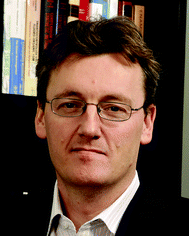Introducing Chemical Science – Recognition starts here
Abstract
It is with great pleasure that we welcome you to the first issue of Chemical Science, the Royal Society of Chemistry's new flagship general chemistry journal. The journal provides a new platform for researchers to publish results of exceptional significance, from all areas of the chemical sciences. So, why would you want to publish in Chemical Science? And, why does the chemistry world need yet another journal?
The Vision
Following extensive feedback from the research community, Chemical Science's goal is clear: to deliver a new and progressive format in which to publish leading edge research in chemistry and to become a top tier, high impact journal. It is widely accepted that there are currently two leading chemistry journals; Chemical Science aims to become a dynamic alternative to these titles. In brief, we will only publish articles of the highest quality and importance, while providing exceptional service to our authors. This will be challenging but is something we, with the support of our outstanding Associate Editors, are determined to achieve.| “I chose Chemical Science since it is an exciting new journal, with the very highest standards RSC publishing is renowned for. I am sure this journal will make a massive impact.” Professor Lee Cronin, University of Glasgow, UK. |
The People
Our 15 Associate Editors cover the breadth of the chemical sciences and are world authorities in their respective fields. They are responsible for maintaining the scientific standards of Chemical Science and, as leading researchers, they are perfectly placed to make key decisions on the quality and significance of articles submitted. The Associate Editors that have been appointed to evaluate submissions and drive the journal forward are:
Stephen L. Buchwald, MIT, USA
Thomas Carell, Ludwig-Maximilians-Universität München, Germany
Benjamin F. Cravatt, Scripps, USA
Christopher C. Cummins, MIT, USA
Kazunari Domen, University of Tokyo, Japan
Matthew Gaunt, University of Cambridge, UK
Hubert Girault, Ecole Polytechnique Fédérale de Lausanne, Switzerland
David A. Leigh, University of Edinburgh, UK
Kopin Liu, Academia Sinica, Taiwan
Jeffrey R. Long, UC Berkeley, USA
Colin Nuckolls, Columbia University, USA
Teri Odom, Northwestern University, USA
Matthew J. Rosseinsky, University of Liverpool, UK
F. Dean Toste, UC Berkeley, USA
Haw Yang, Princeton University, USA
![[thin space (1/6-em)]](https://www.rsc.org/images/entities/char_2009.gif)
The Associate Editors will be supported by a large Advisory Editorial Board which, we hope you will agree, is impressive in both its subject and geographical coverage. The Advisory Editorial Board will play a key role in helping to shape the future of Chemical Science and we look forward to working with them and drawing on their significant expertise.
To find out who is on the Editorial Advisory Board, visit http://www.rsc.org/Publishing/Journals/SC/Staff.asp.
| “I am most enthusiastic about the prospects for Chemical Science. In particular, we will be striving to publish the best possible science with the least number of bureaucratic restrictions. This will ensure that the chemistry will appear in the format most appropriate for its publication.” Professor Stephen L. Buchwald, MIT, USA. |
The Edge Article
After decades of two main manuscript types (communications and full papers), Chemical Science is delighted to introduce a new manuscript type for the publication of frontier and novel research: the Edge Article. Chemical Science editors understand that traditional two or three page limits for the dissemination of new research findings is not suitable across all sub-fields of chemistry. The Edge Article is introduced as a manuscript type that fits across all sub-fields. An Edge Article should present a novel piece of scientific research in an exciting, succinct format. Edge Articles have absolutely no page restrictions, and they do not adhere to a ‘one-size fits all' format for chemistry. Indeed, they might be one page or twenty pages, but in all cases we feel it is important that the science shapes the nature of the publication (and not vice versa). As a result, Edge Articles will give you the opportunity to publish novel research findings without the need for abridged discussions or perspectives. We hope these frontier research studies will be more widely accessible to the larger chemical science audience. Most importantly, however, the format allows the science to dictate the article's length. Chemical Science also publishes both Perspectives and Minireviews.Full guidelines for authors can be located at http://www.rsc.org/Publishing/ReSourCe/AuthorGuidelines/JournalPolicy/SC/index.asp.
| “The fact that the articles will be free to view for 2010–2011 and the current issue will be freely available online means that everyone can read your work.” Professor Lee Cronin, University of Glasgow, UK. |
The Benefits
As well as world leading Associate Editors and a new flexible article format, Chemical Science has a number of other exciting author benefits. Most importantly, all articles published within the first two volumes (2010 and 2011) will be free to access online. This means your research articles will get the widest audience possible, maximising their impact and visibility. In addition, the most newsworthy articles will be featured in the RSC's magazines, Chemistry World, Highlights in Chemical Science, Highlights in Chemical Technology and Highlights in Chemical Biology, as well as being promoted to the broader scientific press. You will also benefit from free colour in all articles, helping to maximise the visual appeal of your research.The Content
We have tried to give the first issue a broad flavour of many of the areas of the chemical sciences. With contributions from leading research groups from around the world, we know you'll find something of interest. For up-to-date information on latest Advance Articles and other journal news, follow us on Twitter or sign up for e-alerts and the Chemical Science RSS feed. For details on how to sign up for either the RSS feed or the Chemical Science e-alert visit www.rsc.org/chemicalscience.And when you cite Chemical Science articles, please note that the correct journal abbreviation is simply Chem. Sci.
| “With Chemical Science, we hope to reach a broad readership in most branches of chemistry. Our article combines proteins, polymers, experiments and theory of supramolecular chemistry. To us, that perfectly fits the objectives of this new journal.” Professor Bert Meijer, Eindhoven University of Technology, the Netherlands. |
The Verdict
The initial response from the chemical science community has been excellent. Whilst it was clear the community felt there was a need for Chemical Science, the clearest indication of support is measured by the submission of high quality research articles. We are delighted with the level of submissions to date, and more importantly, the quality of the articles submitted; hence meeting our expectations from the outset.We hope that you enjoy reading the first issue and agree that the quality of the science meets with our vision and your expectations. Issue one is just the ‘tip of the iceberg’ and we have many more exciting and high quality research articles for you to read in forthcoming issues. Indeed, we have made the conscious decision to publish truly representative articles in the first issues, from which readers will be able to gauge the high standards we envisage for Chemical Science for all subsequent issues.
In conclusion, we will continue to work hard to provide an exceptional service to both our authors and readers while maintaining the high standards that we have set out to achieve. With your support and our ambition, we will succeed in delivering a new top tier high quality chemistry journal that rivals today's best.
Professor David MacMillan, Editor-in-Chief
Dr Robert Eagling, Managing Editor
| This journal is © The Royal Society of Chemistry 2010 |





